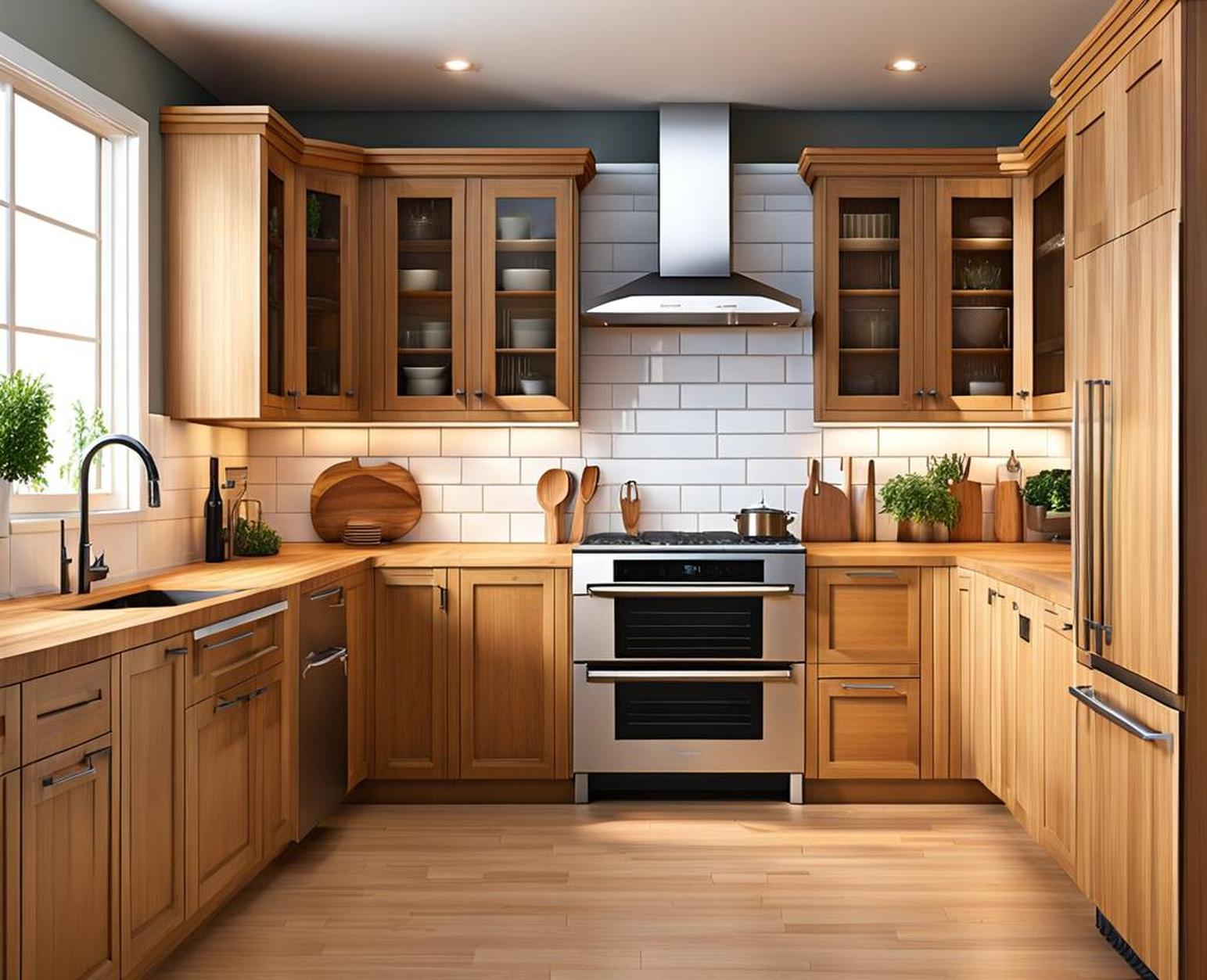Butcher block countertops lend a natural warmth and beauty to any kitchen. When used for kitchen cabinets, the gorgeous wood grain and smooth sanded surface create a welcoming aesthetic. But without proper care, butcher block can quickly become dried out, stained, or damaged. By learning how to maintain your butcher block cabinets, you can keep them looking pristine for years to come.
From choosing the right wood, finish, and style to daily cleaning methods, monthly maintenance routines, and repairing any damage that occurs. Follow these tips and your butcher block will maintain its rich color and velvety smooth texture for decades.
Choosing Butcher Block Cabinets
The first step in caring for your butcher block cabinets is choosing the right type of wood, finish, and cabinet style for your kitchen. Here are some factors to consider:
Wood Type
Hard maple is the most popular wood for butcher block due to its tight, dense grain. It best resists marks, stains, and wear. But walnut, cherry, teak, and bamboo are also good options.
Finish
An oil finish will give you a natural look that’s easy to maintain. Varnish creates a glossier surface but can chip over time.
Style
Face-frame cabinets offer a decorative border. Frameless has a more minimalist look. Drawers make contents accessible while doors hide clutter.
Daily Care
To keep your butcher block cabinets looking like new, you’ll need to clean and care for them properly on a daily basis:
Cleaning
Use a damp cloth with warm water and mild soap to wipe down your cabinets as needed. Avoid harsh cleaners or abrasive pads.

Avoiding Stains
Oil, wine, coffee and other liquids can stain the wood if left to sit. Immediately wipe up any spills. Cover the surface when working with staining foods.
Using Cutting Boards
Chopping directly on the wood can cause nicks and cuts over time. Use a cutting board to protect the surface.
Heat and Moisture
Avoid placing hot pans directly from the stove or oven onto the butcher block. Don’t let water pool on the surface. Both heat and excess moisture can damage the wood.
Monthly Maintenance
In addition to daily cleaning, your butcher block requires monthly upkeep. Here are two important tasks to remember:
Sanding
Once a month, lightly sand your butcher block with 120-150 grit sandpaper. This removes any stains and restores a silky smooth finish.
Oiling
Apply a thin coat of food-grade mineral oil. Let it soak in for a few hours, then thoroughly wipe off excess. Regular oiling prevents drying and cracking.
Preventing and Fixing Damage
Even with the best care, butcher block can become damaged. Here’s how to prevent common issues and make repairs:
Water Damage
Allow the wood to completely dry, then sand and re-oil the affected area. For deep water stains, you may need to sand down to bare wood and refinish.
Scratches and Gouges
For surface level scratches, simply sand and re-oil. For deeper gouges, fill the hole with tinted wood putty before sanding and refinishing.
Re-oiling Over Time
Look for dull, dry areas that absorb oil faster than others. This means the wood needs a fresh coat of oil to regain its luster.
Butcher block cabinets require more maintenance than laminate or wood veneer counterparts, but the warm, natural beauty is worth the extra effort. By starting with quality materials, cleaning daily, oiling monthly, and refinishing as needed, you can enjoy gorgeous butcher block for life.
Remember to choose durable wood, use cutting boards, quickly wipe spills, sand out stains, and keep the surface oiled. Follow these tips and your butcher block cabinets will stay in excellent condition while adding character to your kitchen.
